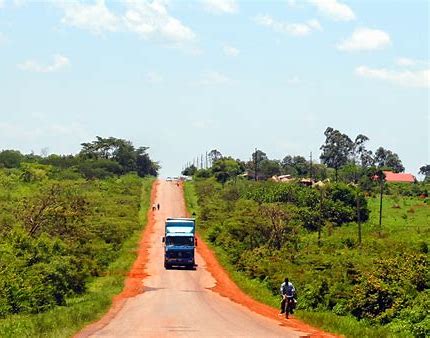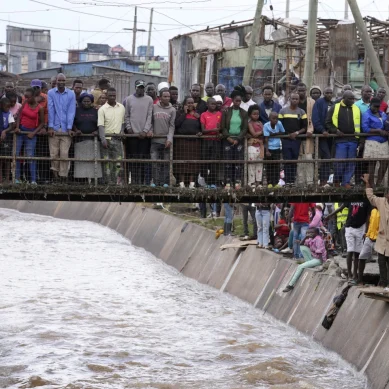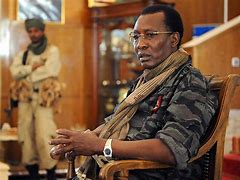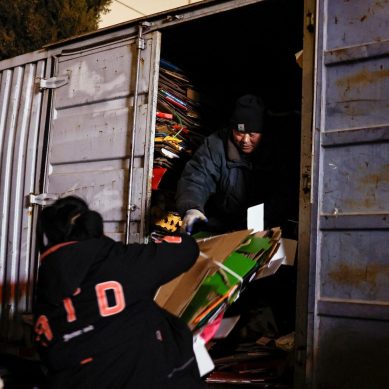
Perhaps it is good for everyone who reads this article to start off by knowing the difference between tragedy and disaster. Many writers use them interchangeably without attempting to show the difference.
I am lucky I am writing this article after reading Alexander Turkhanov’s (2021) article “What is the difference between disaster and tragedy?” Citing Bean (2017), Alexander Turkhanov writes thus:
“Both disasters and tragedies bring about suffering or death; a disaster, however, is caused by an accident or outside force, so that the hero’s physical suffering is not accompanied by guilt, whereas a tragedy is caused by the hero’s wrong choice, leading to an agonizing discovery of personal responsibility, consequence, and spiritual suffering.”
If we go by this, then disaster and tragedy are not exactly the same or do not mean exactly the same thing, although they both result in destruction of life and suffering. Suffering may be due to physical, mind and spiritual harm, but could as well be due to denials, dislocations and unavailability of essential public services due to faulty decisions, actions and ignorance of key actors in society or the economy.
Faulty decisions and ignorance of the actors are the main reason society is disoriented or the national budget is both abused or misallocated, with money going into the pockets of individuals or select interest groups, instead of developing public services for the common good. When this happens, corruption becomes the engine of society and/or the economy. More specifically, the tragedy of the commons is unavoidable. In this context, the tragedy of the commons refers to a situation in which individuals with access to a public resource (also called a common) act in their own interest and, in doing so, ultimately deplete the resource.
With regard to the roads sector in Uganda, the resources are basically the trillions of shillings invested in it by both government and external donors. To many people, the trillions have not resulted in the improvement of roads in Uganda. The trillions of shillings seem to be sinking into a bottomless pit. With very low levels of accountability and transparency in the allocation of contracts and use of the funds, the tragedy of the Commons in Uganda is a spirally evolving phenomenon in the 21st century.
It casts talk of development, transformation and progress as empty talk meant for the political mystification of the population for political gain.
As Alexandra Spiliakos (2019) states in her Tragedy of the Commons: What is it and 5 Examples” theory explains individuals’ tendency to make decisions based on their personal needs, regardless of the negative impact it may have on others. In some cases, an individual’s belief that others won’t act in the best interest of the group can lead them to justify selfish behavior. Potential overuse of a common-pool resource – hybrid between a public and private good – can also influence individuals to act with their short-term interest in mind, resulting in the use of an unsustainable product and disregard the harm it could cause to the environment or general public.
Correctly, she advises that it is helpful for both firms, individuals [and governments] to understand the ‘tragedy of the commons’ so they can make more sustainable and environmentally-friendly choices.
According to Alexander Turkhanov, it is possible to turn disasters into tragedies. Indeed, Therese Lindahl, Anne-Sophie Crépin and Caroline Schill 2016), in their article Potential Disasters Can Turn Tragedies into Success suggest that there is need for increased understanding of the interactions between human behaviour and the environment in common-pool resource systems. Such common pool resources include the national budget and the many natural resources produced in ecosystems. How we relate to and use them explains our appetites for either individual gain or collective development, transformation and progress of our countries, region, or world.
It is against this background that an idea occurred to me in my sleep one night to write this article on “The Disatragedy of Uganda’s Roads Subsector”. Unfortunately, Uganda’s Ministry of Disaster Preparedness does not include disatragedy of Uganda’s road subsector in its mission. It takes landslides, earthquakes and floods and may be volcanic eruptions as its collective mission.
There are so many disasters and tragedies in Uganda that together seem to suggest that Uganda itself is both a disaster and tragedy (i.e, a disatragedy). Let’s adopt the term disatragedy in this article. There are so many disatragedies. I have already mentioned the disatragedy of Uganda. Disatragedies in Uganda include:
- The disatragedy of education
- The disatragedy of health
- The disatragedy of agriculture
- The disatragedy of water
- The disatragedy of animal husbandry
- The disatragedy of refugees
- The disatragedy of knowledge and truth
- The disatragedy of modern slavery
- The disatragedy of presidentialism
- The disatragedy of environment
- The disatragedy of deep state
- The disatragedy of civil service
- The disatragedy of citizenship
- The disatragedy of oil palm growing
- The disatragedy of sugarcane growing
- The disatragedy of sovereignty
- The disatragedy of energy sector
- The disatragedy of cooperatives
- The disatragedy of money bonanzas
- The disatragedy of foreign relations
- The disatragedy of the Executive of Uganda
- The disatragedy of the Parliament of Uganda
- The disatragedy of the Judiciary of Uganda
- The disatragedy of leadership and governance.
- The disatragedy of the national budget
- The disatragedy of roads subsector
As I have indicated in the topic of my article my focus is on “The Disatragedy of Roads Subsector in Uganda”, vrtually all the disatragedies have their origins and causes in leadership and governance. Indeed, behind every disatragedy is the disatragedy of leadership and governance: the decisions and choices of politicians in development, politics, science and technology or how government business is done.
In the Uganda of the 21st century, roads development is hinged on what is called “Road Sector Investment Plan” (RSDP) under what is called Uganda Road Fund (URF). The driver is “A sound transport system is a prerequisite for the socio-economic development and consolidation of the country, particularly the development of the private sector as an engine of growth”. To this end, there are:
- Road Sector Development Programme (RSDP 1), which was formulated as a strategy aimed at promoting cheap, efficient and reliable road transport services with the specific objectives of:
- Providing a national road network capable of meeting the present and future traffic demands while harmoniously integrating road safety and environmental protection requirements;
- Establishing and developing a strong road administration for effective and efficient management of the national road network and;
- Enhancing and developing the local construction industry.
Road Sector Development Programme (RSDP 2) under which it is stated that the three critical aspects of the road sub-sector incorporated into the integration of the District, Urban and Community Access Road (DUCAR) network within the road sub-sector management strategy consistent with the local government rules, placing an increased thrust on road maintenance and the mutation of the RSDP into a rolling 10-year programme.
There is mention of sustainable road network and significance of the roads subsector in poverty reduction and economic development. The Sub-Sector Strategy Objectives are stated as:
- Improve accessibility to all rural and urban areas of the country on a sustainable basis by having at least 80 per cent of the national and the district road networks in a fair to good condition by the year 2006;
- Demarcate and ensure adherence to the road reserves and environmental legislation by the year 2004;
- Establish an Executive Road Agency to manage National Road programmes by the year 2003;
- Increase the participation of the local construction industry in road maintenance to 90 per cent by the year 2006;
- Increase road transport services distribution throughout the country;
- Improve road safety;
- Improve the flow of traffic and the speed of passenger movement in Kampala and the inner urban areas; and
- Increase substantially maintenance funding in the medium-term.
The overall management of the roads subsector is under what is called Uganda National Roads Authority (UNRA), a government agency mandated to develop and maintain the national roads network, advise the government on general roads policy, contribute to the addressing of national transport concerns, and perform certain other functions.
It is headed by Allen Kagina as executive director. She is former executive director of Uganda Revenue Authority (URA), a government revenue collection agency established by the Parliament of Uganda. Operating under the Ministry of Finance, Planning and Economic Development, the URA is responsible for enforcing, assessing, collecting and accounting for the various taxes imposed in Uganda. Under her leadership, URA was able to grow the revenue base of the country.
However, under her leadership, UNRA is presiding over an ever-deteriorating road network despite trillions of shillings invested in the Uganda Roads Fund, either from the Consolidated Fund, the Parliament of Uganda or from external sources.
Construction of roads in Uganda has become the most expensive in the world and most riddled with corruption. Bidding for construction of roads is suspect since the same firms with strings attached seem to be preferred. They are paid a lot of money but end up doing shoddy work. Disasters on our roads have shot up supersonically as the quality of work and the roads themselves have deteriorated meteorically.
It is true as Cynthia Mbabazi (2022) writes in her article Does Public Investment in Infrastructure contribute to economic growth in Uganda?, public investment, particularly in infrastructure, plays a significant role in economic growth and is a critical part of the transition to a more sustainable and resilient world. However, so much success depends on the quality of management and political commitment and guidance for public investment in public infrastructure to deliver. If more effort is spent on individual maximization of gain at the expense of public benefit, the quality of infrastructure will betray those in charge of the roads subsector and country.
According to Minister of Finance, Planning and Economic Development Matia Kasaija’s Budget Speech Financial Year 2023/24 delivered on June 15, 2023 the theme was “Full Monetisation of Uganda’s Economy Through Commercial Agriculture, Industrialisation, Expanding and Broadening Services, Digital Transformation and Market Access”.
No doubt so much success or failure of the realisation of the goals will depend especially on the quality of the country’s governors, the quality of the managers at UNRA and the commitment of the Parliament of Uganda. The total National Budget is Ush52. 7 trillion, but I have not been able to establish how much was allocated to the roads subsector.
Unfortunately, the capacity of the Parliament of Uganda to supervise and correct mistakes in the structural and functional orientations of government are greatly compromised by the behaviour and practice of members who manifest as National Resistance Movement (NRM). Their interest is not so much to make Uganda different as to maintain power under the perennial rule of President Tibuhaburwa Museveni.
How much goes to roads, how it is managed and politically governed are critical. It is important our managers of roads and the political governors have a vision of roads comparable to those elsewhere in the region and world, where little money is used to achieve best possible quality of the roads.
The key questions in the roads subsector of Uganda are:
- How exactly is the subsector managed beyond what is on paper?
- Who decides how money is used in the roads sector?
- How is compensation of those who lose land to the roads subsector done?
- Who exactly owns the land, including the swamps, that ends up lost to the roads subsector?
- Why exactly are Uganda’s roads continuing to deteriorate despite so much money being invested in the roads subsector?
- Who own the roads construction firms habitually selected to construct the roads?
- Why is money allocated to local authorities for road construction and maintenance plummeting meteorically as allocation to the centre is rising supersonically?
- Why are Uganda’s highways remaining narrow unlike those in neighboring Countries?
- Kasaija’s 2023/2024 Budget Speech of March 15, 2023 states that next financial year, the Parish Development Model has been allocated Ush 1.1 trillion. How much of this will be for roads improvement?
- How does government intend to remove the impression that the money is for political buying of individuals in society? How exactly will poverty be reduced?
For God and My Country.
- A Tell report / By Prof Oweyegha-Afunaduula, a former professor in the Department of Environmental Sciences of the Makerere University, Uganda
.











